

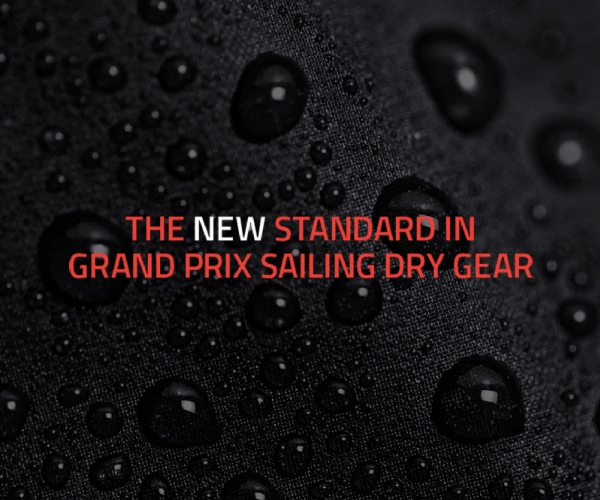




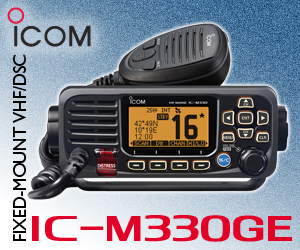
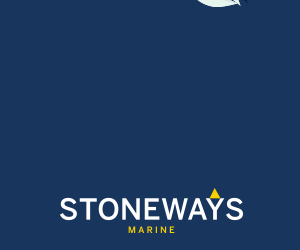

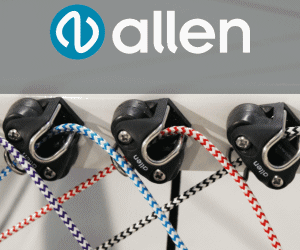


Boats for sale
| Rossiter Pintail Mortagne sur Gironde, near Bordeaux |
 |
| Laser 140101 Tynemouth |
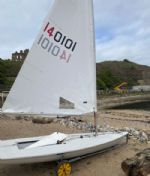 |
| Laser 28 - Excellent example of this great design Hamble le rice |
 |
List classes of boat for sale |
Downwind By the Lee & an Unstayed Rig |
Post Reply 
|
Page 123> |
| Author | |
boatshed 
Far too distracted from work 
Joined: 12 Apr 05 Online Status: Offline Posts: 457 |
 Post Options Post Options
 Quote Quote  Reply Reply
 Topic: Downwind By the Lee & an Unstayed Rig Topic: Downwind By the Lee & an Unstayed RigPosted: 26 Jul 13 at 10:16am |
|
I post this picture below of a Finn stolen from the Worlds Flickr site which shows the boom out far more than 90 deg ! I know the Finns can pump freely above 10 knots and maybe this is what is going on ; the helm has eased off a big armful of main and is just about to aggressively haul it in again.
But my first question for 'non pumping classes' with similar rigs, is this : Is the quickest way down wind, in a medium breeze, to free off the main well beyond 90 deg and then keep bearing off ? If so, I can't help thinking this will utterly destabilise the boat with massive lurches to windward which will then require the helm to make correspondingly aggressive boom adjustments just to stay upright. My second question is: In non-pumping classes, at what point does trying to stay upright, by constant boom adjustment, start to become pumping ?  Edited by boatshed - 26 Jul 13 at 10:16am |
|
|
Steve
|
|
 |
|
yellowwelly 
Really should get out more 
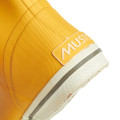
Joined: 24 May 13 Online Status: Offline Posts: 2003 |
 Post Options Post Options
 Quote Quote  Reply Reply
 Posted: 26 Jul 13 at 10:33am Posted: 26 Jul 13 at 10:33am |
|
we were always taught in Oppies to get that boom out past 90 in light winds- there was some diagram on a training course I attended where I first saw the acronym VMG and in essence they were trying to get us to start sailing angles and look shifts and pressure.... a moot point for those of us who spent downwind bailing out with our head in the boat, or at best took a transit on a sheep to stop 'sailing bananas' to the mark.
I have no idea if that is the current schooling for Oppy/Laser kids.... but it looks fast in that photo.
|
|
 |
|
winging it 
Really should get out more 

Joined: 22 Mar 07 Online Status: Offline Posts: 3958 |
 Post Options Post Options
 Quote Quote  Reply Reply
 Posted: 26 Jul 13 at 10:41am Posted: 26 Jul 13 at 10:41am |
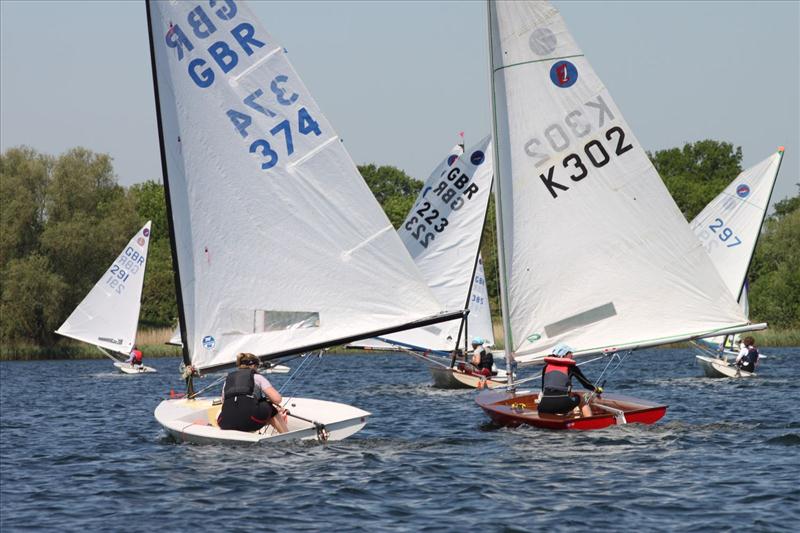 these Europes are doing much the same at a training day at Hunts. Those that allowed the boom well forward were significantly faster. Some sailors were not entirely comfortable with this at first, but it is a balancing act that can be mastered and does pay dividends. Pumping when it's legal is also a skill to be mastered and as the Finns show, requires considerable agility to do it effectively and safely! |
|
|
the same, but different...
|
|
 |
|
robin34024 
Posting king 
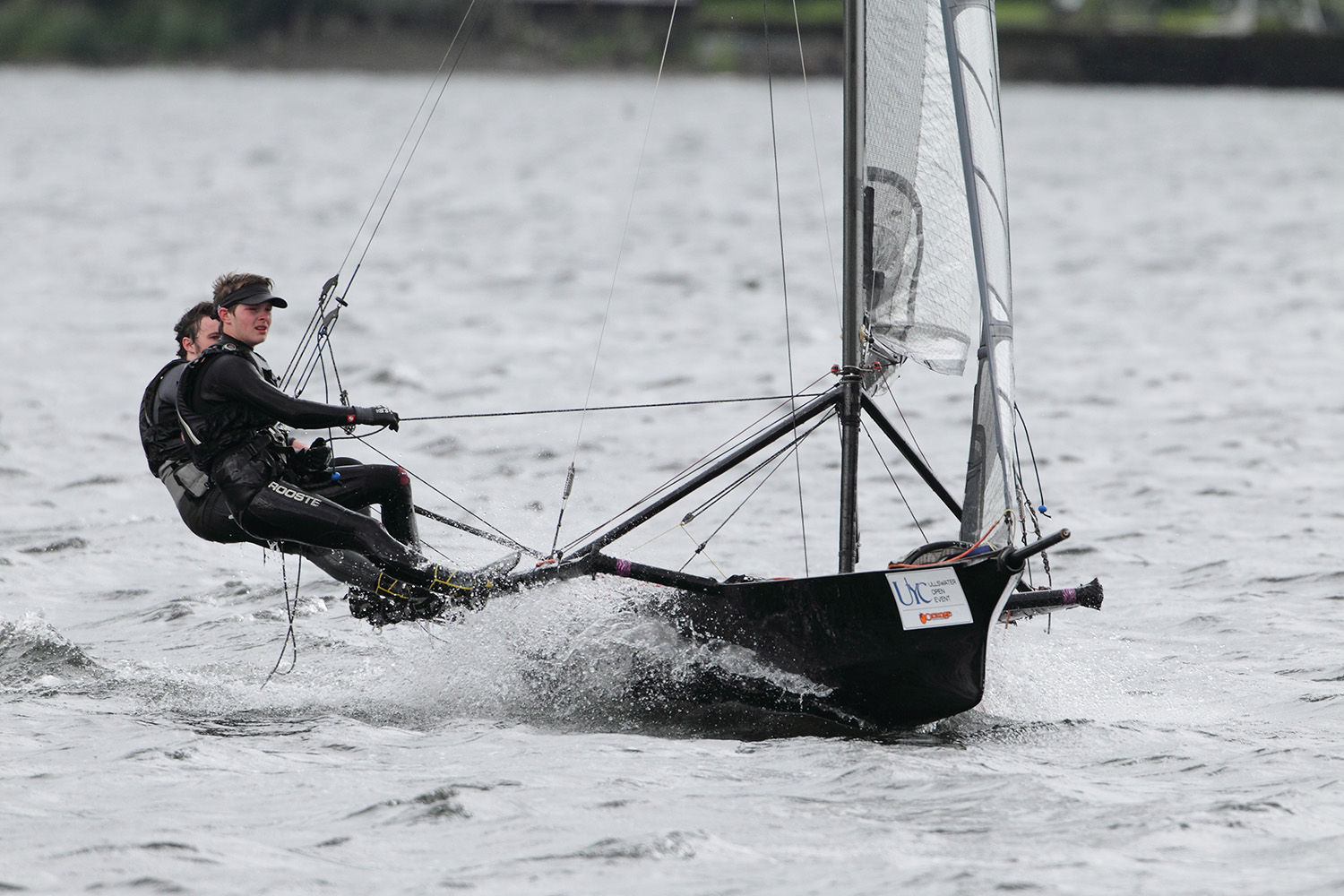
Joined: 03 Jan 12 Location: Lincoln Online Status: Offline Posts: 116 |
 Post Options Post Options
 Quote Quote  Reply Reply
 Posted: 26 Jul 13 at 10:45am Posted: 26 Jul 13 at 10:45am |
|
in the toppers, we always aimed to spend most of the time with the boom maybe 10-20 degreed forward of the mast with barely any kicker on. if you think about it, you reverse the airflow of the sail, and make what is actually the leech, the luff and the mast becomes the leech. in a topper at least, this actually helped stabilize the boat, as you hadn't got a bouncy leech all the time, and of course, it reduced the risk of Chinese gybes. probably took its toll in the number of death rolls though :/
|
|
 |
|
andymck 
Far too distracted from work 
Joined: 15 Dec 06 Location: Stamford Online Status: Offline Posts: 397 |
 Post Options Post Options
 Quote Quote  Reply Reply
 Posted: 26 Jul 13 at 11:12am Posted: 26 Jul 13 at 11:12am |
|
We recently had a training day from mr Goodison. He suggested the boom should not go beyond 90, but the kicker should be off so the sail does. He also stressed that looking for the puff and steering to get in it and stay in it for as long as possible was the real key to going down the run fast. We also talked about angles which should increase in lighter winds, and that sometimes a gybe may be better than by the lea to stay in the puff.
This is not the first time I had been given the same advice, another Olympic coach, swiss team, who in fact used to be a Hunts member had also mentioned the 90 degree rule. I now tend to stick to this, as do most of the front few in the laser fleet at Rutland. Looking at the picture above. I would like to see the next few in a series as I wonder if he is about to gybe. Andy Edited by andymck - 26 Jul 13 at 11:18am |
|
|
Andy Mck
|
|
 |
|
PeterV 
Posting king 
Joined: 24 Feb 07 Location: United Kingdom Online Status: Offline Posts: 131 |
 Post Options Post Options
 Quote Quote  Reply Reply
 Posted: 26 Jul 13 at 12:13pm Posted: 26 Jul 13 at 12:13pm |
|
Why not just practice during a club race? I find on flat water I can sail my Finn astonishly far by the lee and it's usually fast. but you do need to be able to cope with the amount of windward heel generated. Tactically it's a very useful ploy when sailing in a mixed fleet, because you can stay on starboard when all the stayed boats have to be on port.
|
|
|
PeterV
Finn K197, Finn GBR564, GK29 Warsash |
|
 |
|
MattHarris 
Groupie 
Joined: 03 Oct 06 Location: United Kingdom Online Status: Offline Posts: 94 |
 Post Options Post Options
 Quote Quote  Reply Reply
 Posted: 26 Jul 13 at 12:17pm Posted: 26 Jul 13 at 12:17pm |
We queried this with an RYA judge who did a talk at the club a few years back. We'd had this issue with lasers sailing heavily by the lee into marks just to push people out of the way. Apparently port/starboard is based on the direction the wind travels across the deck not which side the boom is on. With this in mind windward boat would be at play in the situation you describe rather than port/starboard...
|
|
 |
|
yellowwelly 
Really should get out more 

Joined: 24 May 13 Online Status: Offline Posts: 2003 |
 Post Options Post Options
 Quote Quote  Reply Reply
 Posted: 26 Jul 13 at 12:27pm Posted: 26 Jul 13 at 12:27pm |
|
I'd be interested to see that theory tested in a protest room Matt.... and what wind are we talking about, the wind can bend, skew, be offset with apparent wind from momentum.... the side the boom on, I reckon, would be the deciding factor for most PCs.
|
|
 |
|
GarethT 
Really should get out more 

Joined: 21 Apr 07 Online Status: Offline Posts: 714 |
 Post Options Post Options
 Quote Quote  Reply Reply
 Posted: 26 Jul 13 at 12:53pm Posted: 26 Jul 13 at 12:53pm |
|
According to the RRS Definitions, your judge is wrong....... Leeward and Windward: A boat’s leeward side is the side that is or, when she is head to wind, was away from the wind. However, when sailing by the lee or directly downwind, her leeward side is the side on which her mainsail lies. The other side is her windward side. When two boats on the same tack overlap, the one on the leeward side of the other is the leeward boat. The other is the windward boat. Tack, Starboard or Port: A boat is on the tack, starboard or port, corresponding to her windward side. |
|
 |
|
PeterV 
Posting king 
Joined: 24 Feb 07 Location: United Kingdom Online Status: Offline Posts: 131 |
 Post Options Post Options
 Quote Quote  Reply Reply
 Posted: 26 Jul 13 at 12:55pm Posted: 26 Jul 13 at 12:55pm |
|
Has to be, imagine the chaos otherwise when two boats are sailing parallel courses with their booms on different sides!
|
|
|
PeterV
Finn K197, Finn GBR564, GK29 Warsash |
|
 |
|
Post Reply 
|
Page 123> |
| Forum Jump | Forum Permissions  You cannot post new topics in this forum You cannot reply to topics in this forum You cannot delete your posts in this forum You cannot edit your posts in this forum You cannot create polls in this forum You cannot vote in polls in this forum |
Bulletin Board Software by Web Wiz Forums® version 9.665y
Copyright ©2001-2010 Web Wiz
Change your personal settings, or read our privacy policy
Copyright ©2001-2010 Web Wiz
Change your personal settings, or read our privacy policy











 Printable Version
Printable Version Delicious
Delicious Digg
Digg Facebook
Facebook Furl
Furl Google
Google MySpace
MySpace Newsvine
Newsvine reddit
reddit StumbleUpon
StumbleUpon Twitter
Twitter Windows Live
Windows Live Yahoo Bookmarks
Yahoo Bookmarks Topic Options
Topic Options